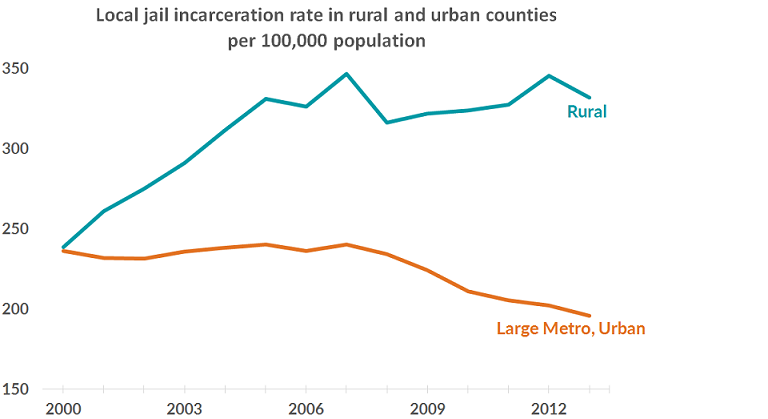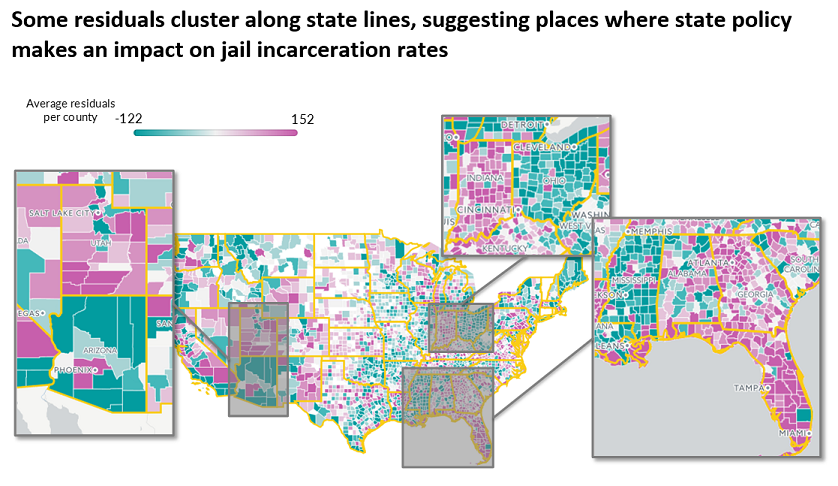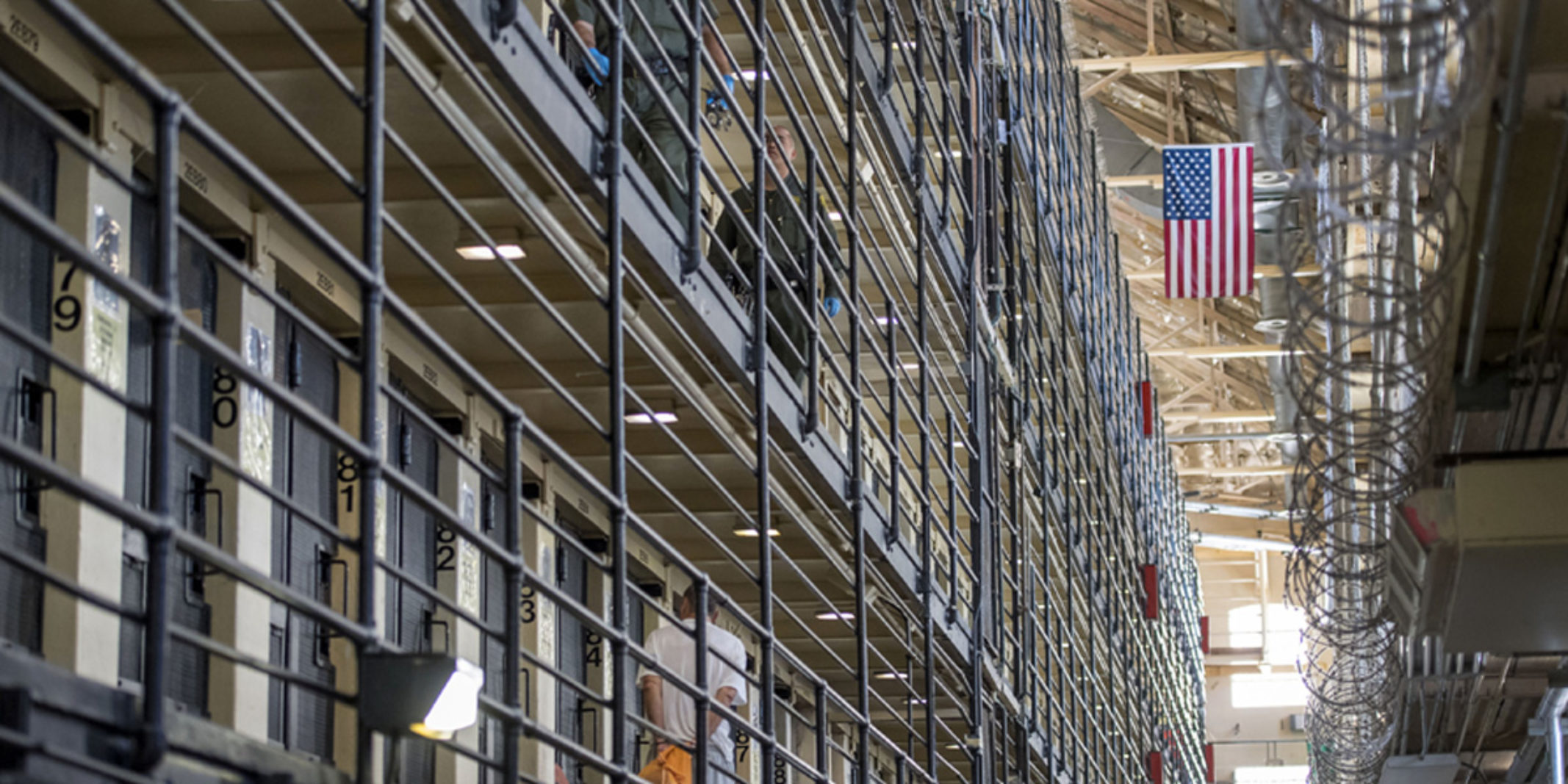In June 2017, researchers at the Vera Institute of Justice published a previously unknown discovery—despite lower crime rates, small and rural counties, rather than urban centers, now have some of the nation’s highest jail incarceration rates.
Infamous big city jails, like New York’s Rikers Island, are recognizable by name. This intense scrutiny has pressured policymakers to drive down the jail incarceration rate in many urban areas. Meanwhile, in the large collection of smaller, rural jails, a different story is playing out. Jail incarceration rates in urban counties have gone down, while those in rural counties have dramatically increased. In 2000, urban and rural counties had similar proportions of adults in jail; by 2013, the rate in rural counties was nearly twice as high. Rikers may be closing, but rural jails are getting bigger and holding more inmates per capita than they were at the start of the millennium.

This phenomenon, which Vera’s researchers have referred to as the “rurality of jails,” is not strictly a rural versus urban trend; jail incarceration rates are higher and have grown faster in rural counties than in small and mid-sized metros, as well as suburban areas.
“It is rural America that represents the true picture of U.S. jails today,” Jacob Kang-Brown, a senior researcher at Vera, wrote in The Atlantic.
But why is this the case? What is it about rural counties, apart from their “rurality,” that contributes to their jail populations being disproportionately high?
Vera approached the Two Sigma Data Clinic to help explore other factors that could explain why jail incarceration rates diverge between counties.
To be sure, a county’s position on the rural to urban spectrum is important for understanding its jail incarceration rate, but geographical classification is not an “actionable” factor. For policymakers in counties facing overcrowded jails, pinpointing specific county characteristics associated with higher rates is more useful than saying that its rural/urban designation is driving jail incarceration one way or another.
The Data Clinic combined jail statistics for 2000 through 2013, compiled by Vera, with county and state characteristics, like poverty, crime, and other factors that they hypothesized could be associated with a county’s local jail incarceration rate.
The analysis was possible because of Vera’s earlier work on the Incarceration Trends project, which merged previously siloed data from the Justice Department’s Bureau of Justice Statistics and other government reports to produce historical jail statistics for every U.S. county.
Using local jail incarceration rates as the outcome measure, the Data Clinic compared three main models using a statistical technique that could account for correlations within counties and over time; that is, a county’s jail rate in one year is likely to be related to its rate in subsequent years.
The initial model included a county’s geographical metro classification as the only input; an intermediate model included metro classification alongside year to control for time effects; and a final model included metro classification, year effects, and other county, jail, and state characteristics.
When all was said and done, the final model accounted for about half of the discrepancy between rural areas and other geographical metro areas.
The most important factor the model found for explaining local jail incarceration rates? County-level poverty.
Poorer counties, which are often also rural, may have limited resources to process court cases. Unlike prison inmates, the majority of people held in local jails are awaiting trial (the rest are serving short sentences), so slower-moving court cases can lead to higher jail populations. Pre-trial inmates in poorer areas may also have limited individual resources, meaning they are less likely to post bail.
Poorer counties may also lack social services that could divert low-level offenders with special needs, like mental health issues, toward treatment facilities instead of jails.
Poverty may even be a more important factor in explaining local jail incarceration across counties than arrests or crime.
When considered alongside data on arrest rates and burglary and robbery crime, poverty had the greatest association with local jail incarceration rates, while arrests and crime were insignificant.
This result is preliminary, due to inconsistencies in crime reporting over time (arrests and crime were not included in the final model). However, it aligns with some of Vera’s previous descriptive research. Crime rates are lower in rural counties compared to urban ones, and down nationally since 2008, suggesting that rural counties’ now higher jail incarceration rates are not related to changes in crime.
To identify counties that had an exceptionally high or exceptionally low proportion of adults in jail, the Data Clinic examined residuals—the difference between each county’s actual jail incarceration rate and the predicted rate according to the final model.
Residuals compare the local jail incarceration rate in each county to rates in similar counties. This way, a county’s peers are the benchmark for determining whether its rate is higher or lower than expected.
For example, the local jail incarceration rate in Arizona’s Maricopa County—home to former Sheriff Joe Arpaio and his notorious Tent City jail—is actually unremarkable when compared to the national median over the 2000 to 2013 period; the rate is only slightly higher than average. But when compared to the model estimate for an urban county with similar characteristics, Maricopa County’s jail incarceration rate is double the expected rate. Compared to its peers, Maricopa County has an extremely high local jail incarceration rate.
Some residuals appear to cluster along state lines. Nearly every county in Indiana, for instance, has higher-than-expected jail incarceration rates. Dearborn County, Indiana, has the highest total incarceration rate (across prisons, jails, and other detention facilities) in the nation. In neighboring Ohio counties, incarceration rates are lower than expected.
This comparative analysis can inform future investigation into how local policy and culture in certain states could bear relation to incarceration trends.
In Dearborn County, for example, officials recently “spent $11.5 million to double the size of the local jail,” according to the New York Times.
Aaron Negangard, a former prosecuting attorney for the county, told the Times in 2015 that he was “proud of the fact that we send more people to jail than other counties.” Negangard is now chief deputy to Indiana’s attorney general.

For Vera, the Data Clinic team’s research is a launching point for future work.
“It seems pretty clear we need to better understand the intersection of poverty and over-used justice systems,” said Christian Henrichson, research director of Vera’s Center on Sentencing and Corrections.
Vera plans to make the data from Incarceration Trends more readily accessible later this year, by adding links to bulk downloads as well as an API.
“When we started this project, there was very little known about jails other than the fact that they’ve grown over time,” said Kang-Brown.
By further opening the data, others can continue Vera and the Data Clinic team’s research to examine the complex drivers of jail incarceration at the local level.
Additional information
- Learn more about Two Sigma’s Data Clinic here.
- Abstract and full paper: Exploring the Urban – Rural Incarceration Divide: Drivers of Local Jail Incarceration Rates in the U.S.
- Incarceration trends: https://www.vera.org/projects/incarceration-trends
- From Vera: Out of Sight: The Growth of Jails in Rural America






